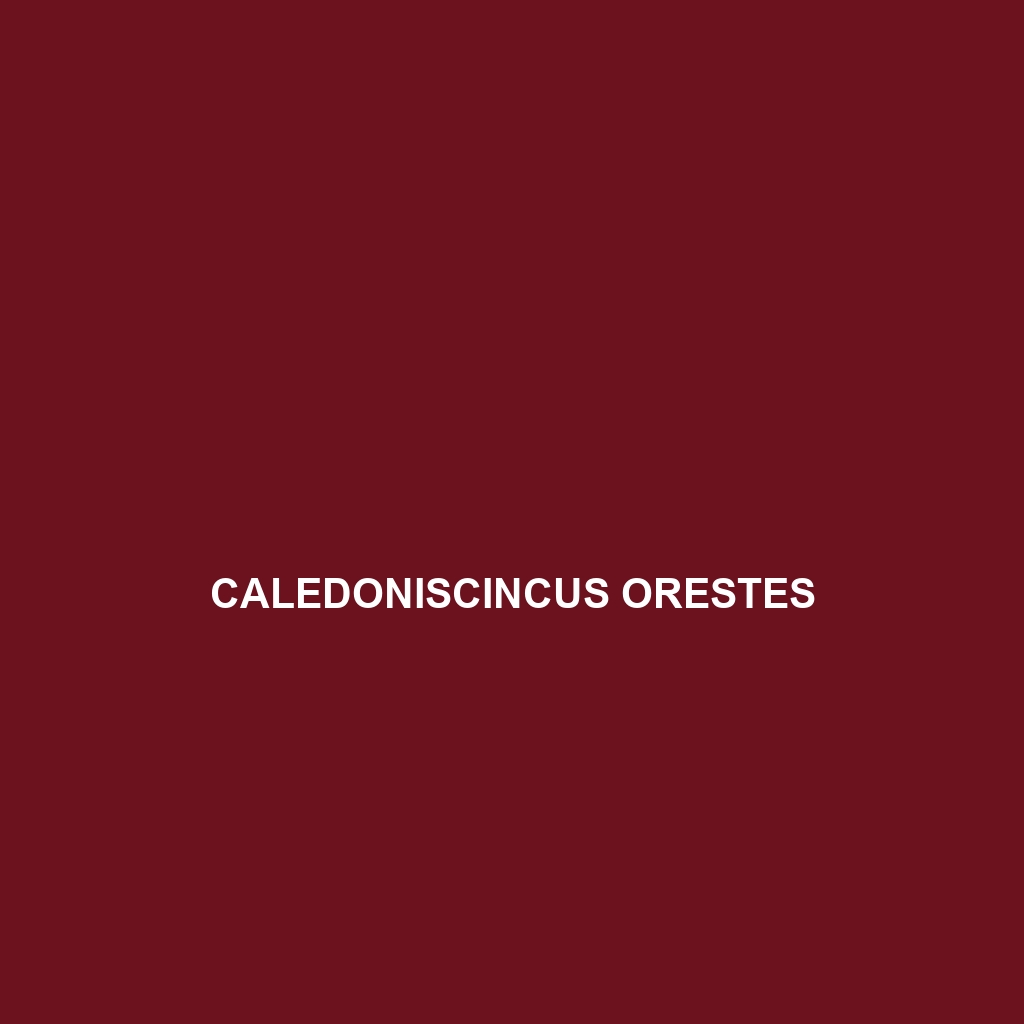Caledoniscincus notialis – Species Description
Common Name: Caledoniscincus notialis
Scientific Name: Caledoniscincus notialis
Habitat
Caledoniscincus notialis is primarily found in the lush forests of New Caledonia, an island located in the South Pacific. This skink prefers humid, tropical environments and is often located in moist leaf litter or under logs and rocks. The species thrives in a variety of forest types including both lowland and montane forests, often within proximity to freshwater sources.
Physical Characteristics
This medium-sized skink typically measures between 12 to 20 centimeters in length. Caledoniscincus notialis boasts a vibrant coloration, ranging from dark brown to a more striking greenish hue, adorned with subtle bands that may aid in camouflage against the forest floor. Its smooth and elongated body features short limbs, a distinctively pointed snout, and small, well-defined scales, making it easily recognizable.
Behavior
Caledoniscincus notialis is primarily diurnal, exhibiting high levels of activity during the day. These skinks are known to be agile climbers, often seen basking in the sun on low branches before retreating to the safety of leaf litter. They display curious behaviors, such as foraging in leaf litter for food and utilizing rocks as vantage points to observe their surroundings.
Diet
The diet of Caledoniscincus notialis consists mainly of insects and other small invertebrates, including ants, beetles, and spiders. This skink is known to forage actively, using its keen sense of smell to locate food sources. Their feeding habits are essential in controlling insect populations in their habitat, making them vital members of the ecosystem.
Reproduction
Caledoniscincus notialis breeds seasonally, typically during the warmer months. Mating occurs in the spring, with females laying up to 5 eggs in sandy or moist soil. The incubation period is approximately 2 months, after which the young skinks emerge fully formed and ready to fend for themselves. Parental care is minimal, with adults leaving the hatchlings to locate food independently.
Conservation Status
Currently, Caledoniscincus notialis is classified as vulnerable due to habitat loss and degradation, primarily caused by deforestation and the introduction of invasive species. Conservation efforts are crucial to ensure the survival of this distinctive skink, and monitoring populations is ongoing.
Interesting Facts
A fascinating aspect of Caledoniscincus notialis is its ability to regenerate its tail after losing it to predators, a common defensive strategy among many lizard species. This regeneration not only aids in survival but also allows them to thrive in their native habitat.
Role in Ecosystem
Caledoniscincus notialis plays a significant role in the forest ecosystem of New Caledonia. As both prey and predator, these skinks contribute to the balance of the food web, controlling insect populations while providing sustenance for larger predators. Their presence indicates a healthy ecosystem, showcasing the interdependence of species within their habitat.
This HTML-formatted species description for Caledoniscincus notialis incorporates SEO best practices by using relevant keywords and structuring the content for readability and engagement.
